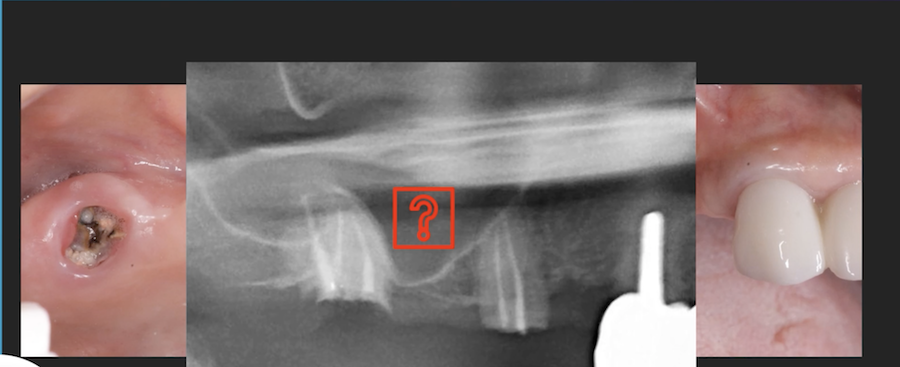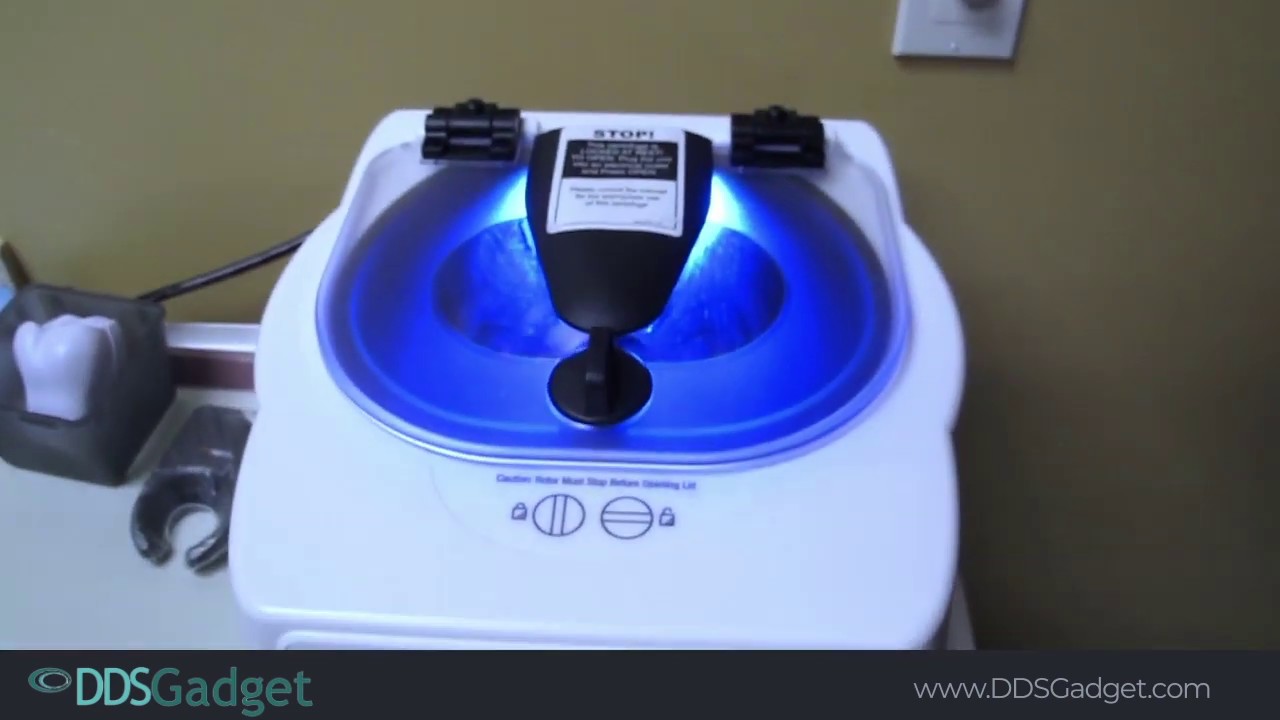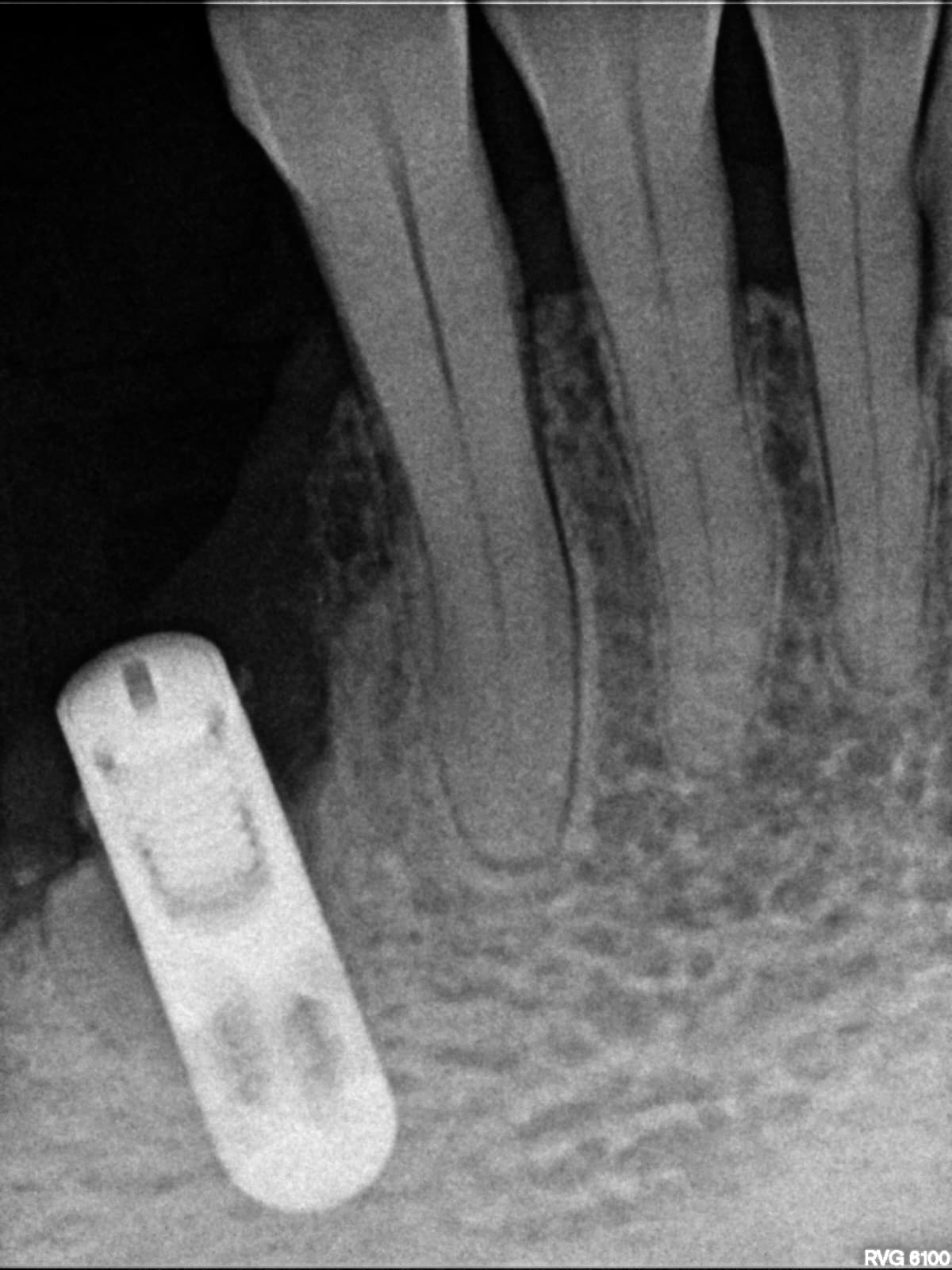Lamina Dura: How do you measure the distance?
Wondering if with the use of the CT everyone is still maintaining the 1.5mm rule from the tooth to the implant? With a CT I have a lot of times when my cases show the lamina dura being closer than 1.5mm.
When you are measuring do you run the risk of devitalizing the tooth if you are closer than 1.5mm to the lamina dura? Or do you measure to the actual root surface?
Also, wondering about this case below, in particular.Previously endo / post treated area that failed and required extraction. Patient is ready for implant placement, but curvature of the root on #5 is limiting the size of the implant placement to 3.0mm diameter implant, and even with this it’s less than 1mm to the adjacent teeth. I don’t think it will be a problem as both of the adjacent teeth are Root canal treated. What do you recommend? Thanks for the thoughts and input.

























